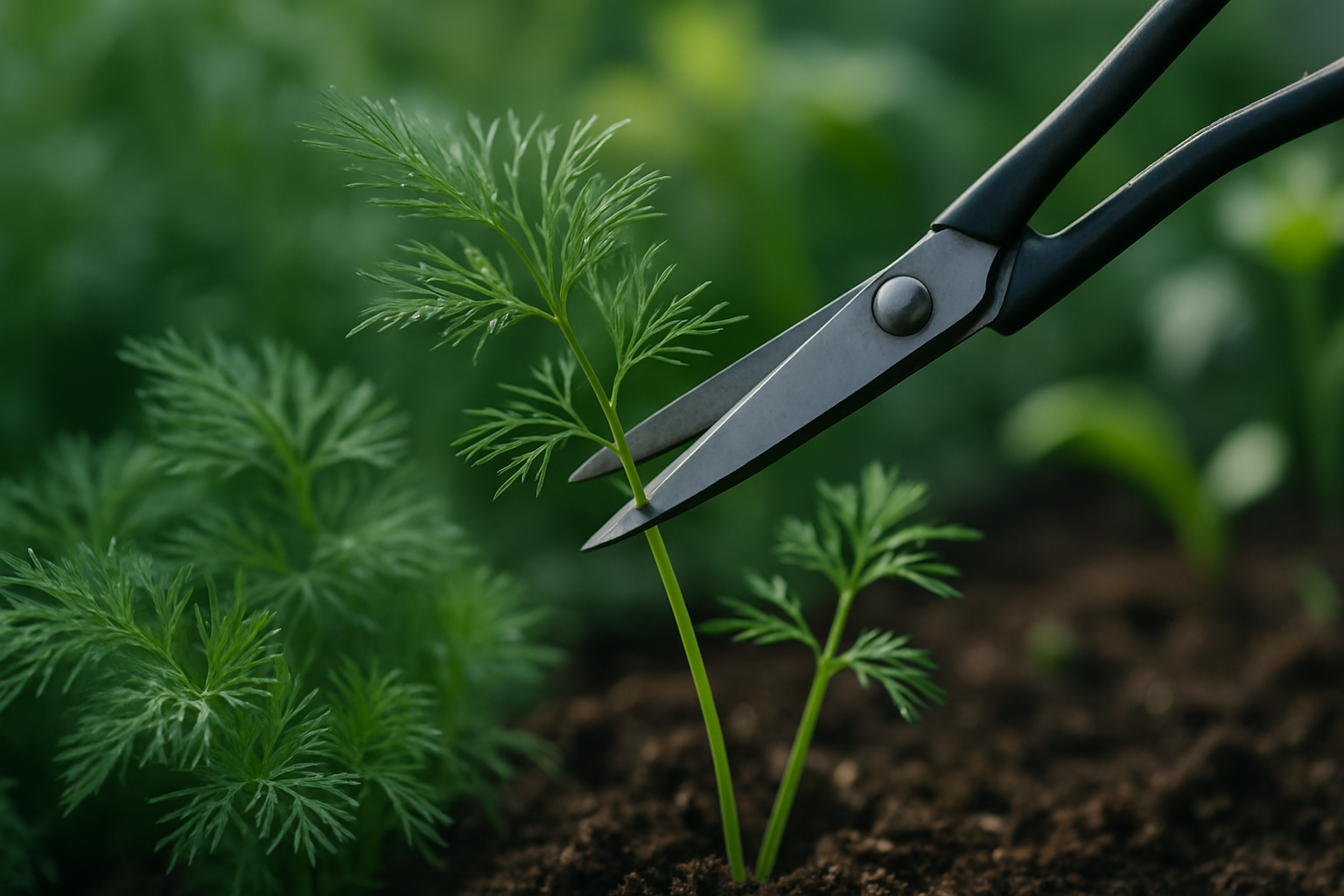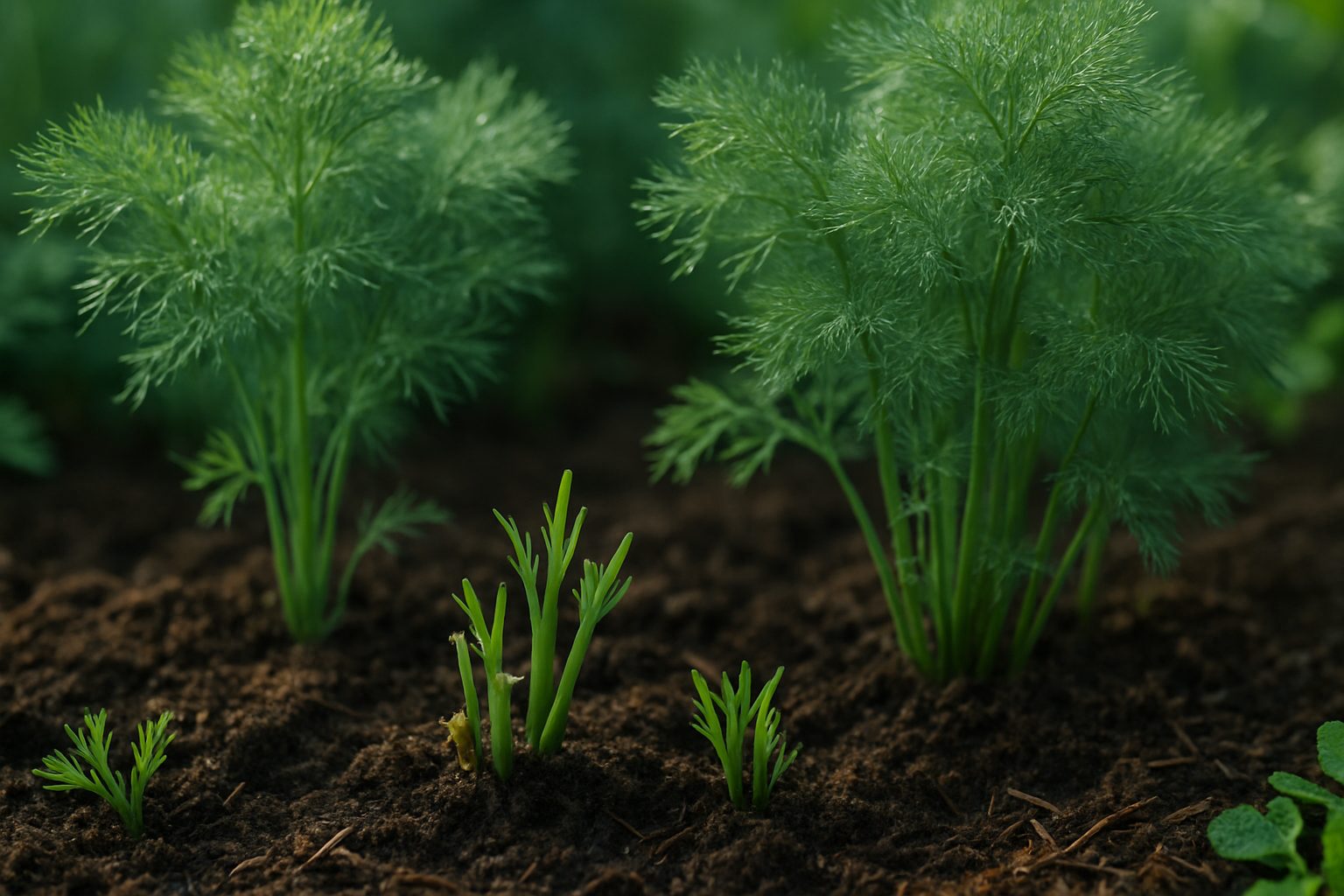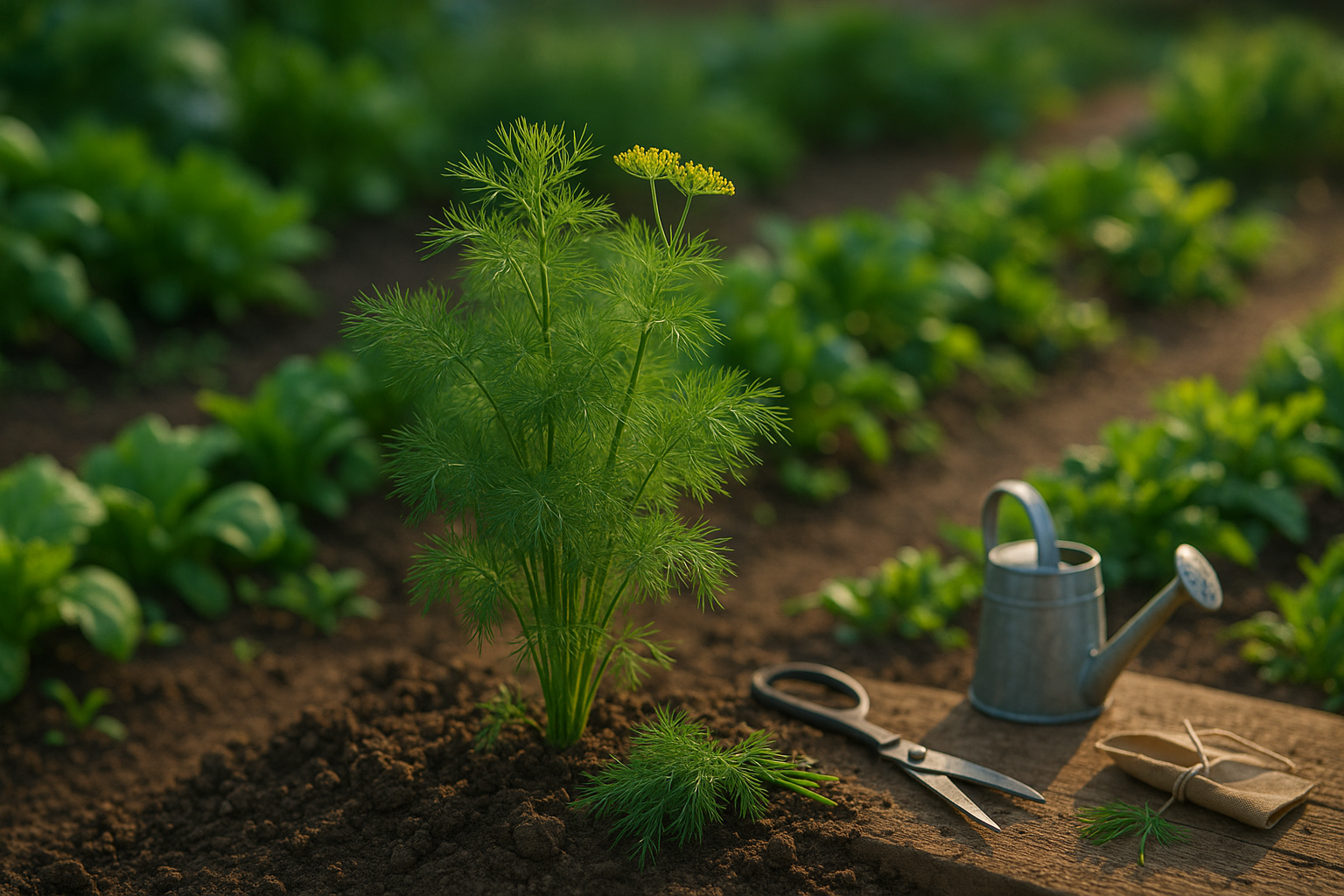Understanding Dill Growth Habits
Dill is a popular herb known for its feathery green leaves and distinct fresh flavor, often used in pickling, salads, and fish dishes. It’s generally easy to grow, preferring full sun and well-draining soil, and can thrive both in garden beds and containers.
One of dill’s defining features is its rapid life cycle; it grows quickly from seed, producing fine foliage and eventually tall, umbrella-shaped yellow flower heads. However, dill is an annual, meaning it completes its whole life—from seed to flower to seed—within a single season and does not survive winter freezes.
When you harvest dill by snipping off leaves, the plant usually responds by sending up new shoots from lower down the stem, especially if you cut lightly and avoid taking too much at once. This regrowth allows you to enjoy fresh dill over several weeks.
But unlike many perennial herbs, dill only regrows so much before its focus shifts to flowering and going to seed. Once dill begins to bolt (flower), the leaves become less flavorful, and the plant puts most of its energy into seed production rather than new foliage.
For home gardeners, this brings up a common question: If you cut your dill, will it keep coming back, or does harvesting hasten its end? Understanding dill’s annual growth habit and post-harvest behavior helps set expectations for a steady supply and guides you in creating a staggered planting schedule for continual fresh harvests throughout the growing season.
When and How to Cut Dill for Regrowth

Knowing exactly when and how to cut dill for regrowth can make a big difference in your harvest. The best time to cut dill is when the plant reaches about 8 to 12 inches tall, has plenty of lush green leaves, but before it starts to flower. Early morning is optimal—this is when the plant’s oils and flavors are at their peak, and the leaves are hydrated from the night.
Look for healthy, full stems without any yellowing or dried leaves. Using sharp kitchen scissors or garden shears, snip individual stems about 4 to 6 inches from the top, always leaving at least a third of the plant intact. Make cuts just above a leaf node (the point where leaves sprout from the stem). This encourages the plant to send out fresh side shoots, keeping the dill bushy and productive.
Avoid cutting more than one-third of the plant at a time, as over-harvesting can stress it and slow regrowth. Likewise, don’t cut too early—let seedlings establish several sets of true leaves before your first snip—or too late, as flowering signals the end of the best leaf production.
Be gentle when handling the stems to avoid breaking or bruising them, and steer clear of using dull scissors, which can crush the plant. To boost yield even further, stagger your harvests over several plants if possible, fertilize lightly after each cut, and water consistently. Mulching around the base with organic material keeps the soil cool and moist, supporting healthy regrowth.
By following these simple steps, you’ll enjoy a steady supply of fresh dill from your garden all season long.
The Regrowth Process

After you’ve trimmed your dill, you’ll start to see new shoots and leaves emerging from the cut stems within a week or two, depending on the plant’s health and growing conditions. The earliest signs of regrowth usually appear as tiny, feathery shoots that gradually thicken and expand into fuller fronds.
With enough sunlight, warmth, and moisture, dill can replace much of its lost foliage in two to four weeks, allowing for another harvest within a month. However, it’s important to remember that dill isn’t a “cut and come again” herb like basil; its regrowth is limited as the plant matures.
Each plant can only recover from trimming a few times before it enters its flowering phase (bolting). At this stage, the plant shifts its energy from leaf production to seed development, causing the leaf quality to decline. Generally, expect two to three productive harvests from a single plant before the leaves become less flavorful or sparse.
A common misconception is that you can harvest dill indefinitely—while careful, partial cutting can extend productivity, no amount of selective harvesting will turn dill into a perpetual provider. To enjoy a steady supply, stagger your plantings or sow new seeds every few weeks throughout the growing season. This way, as one plant finishes its lifecycle, another is ready to take its place, ensuring you always have fresh dill on hand.
Caring for Dill Post-Harvest to Boost Regrowth
After harvesting dill, how you care for your plants greatly affects their regrowth and overall health. Start by keeping your dill patch consistently moist—water the soil when the top inch feels dry, but avoid overwatering, which can lead to root rot.
A light feeding with a balanced, organic fertilizer helps replenish nutrients used during leafy growth and harvesting. Apply it once every four to six weeks, but avoid heavy fertilization, as too much can weaken the flavor.
Full sunlight is essential, so ensure your dill gets at least six hours of sun daily. If you’re growing dill in containers, rotate the pots regularly to maximize sun exposure.
To maintain healthy plants and prevent disease, remove any debris or fallen leaves around the base, as these can harbor pests and fungus. Also, thin out plants to promote good air circulation.
After harvesting, watch for signs of stress such as wilting, yellowing, or limp stems, and promptly trim away any damaged or diseased foliage.
To encourage lush leafy regrowth, routinely pinch off flower heads as soon as they appear. This helps the plant focus its energy on producing more leaves.
For continuous harvests, only snip off about one-third of the plant at a time, allowing it to fully recover between cuttings.
Regular, gentle maintenance like these practices not only protects your dill from disease and burnout but also ensures a steady supply of fresh herbs all season long.
Pruning for Bushier Plants and Prolonged Harvests
Pruning is a simple yet effective way to encourage dill plants to grow full and bushy instead of tall and sparse—often called “leggy.” The most common approach is light trimming: regularly snipping the top two to four inches of new growth with clean scissors, just above a leaf node. This redirects the plant’s energy into branching out rather than shooting upward, promoting fresh side stems and resulting in a lusher, more productive dill plant.
Heavier cutbacks, where you remove up to a third of the plant’s height, can be helpful if your dill has become overgrown or started flowering early. However, heavy pruning should be done sparingly, as removing too much at once can stress the plant and slow regrowth.
To get the best from your dill all season, start pruning once the plant reaches about eight inches tall, and keep harvesting regularly. This not only provides you with fresh dill but also keeps the plant in its vegetative, leaf-growing stage for longer. Some gardeners recommend using sharp, clean scissors to prevent disease and making cuts in the morning when the dill is turgid for easier handling.
Consistent pruning delays bolting (flowering), yields more flavorful leaves, and helps prevent overcrowding, which improves airflow and reduces the risk of fungal diseases. However, avoid trimming more than one-third of the plant at a time, as this can hinder growth. Pruning is truly the secret to a longer, more abundant dill harvest, and the results are well worth a few extra minutes each week in the garden.
Final Tips and Troubleshooting Regrowth Issues
If your dill isn’t bouncing back after cutting, a few common culprits might be at play. Overharvesting—taking too much at once—can leave too few leaves for the plant to photosynthesize and regrow, so always leave at least a third of the plant intact.
Pests like aphids and caterpillars can sap vigor from new shoots; check regularly and remove them by hand or use gentle organic solutions.
Environmental stresses, such as too little sunlight, poor drainage, or extreme temperatures, often slow regrowth—ensure your dill gets at least six hours of sun and water only when the top inch of soil is dry.
If regrowth is weak, try side-dressing with compost to boost nutrients, and trim only the top leaves to encourage bushier plants. Don’t forget to avoid cutting the main stem too early; let your dill establish for several weeks.
Rotate containers or garden spots yearly to prevent disease. Above all, watch your plant’s response and adjust care routines—gardening is a learning process.
Experiment with different harvesting techniques and note what works for your specific conditions; dill is resilient and will often reward a little extra attention with abundant, fragrant regrowth.
